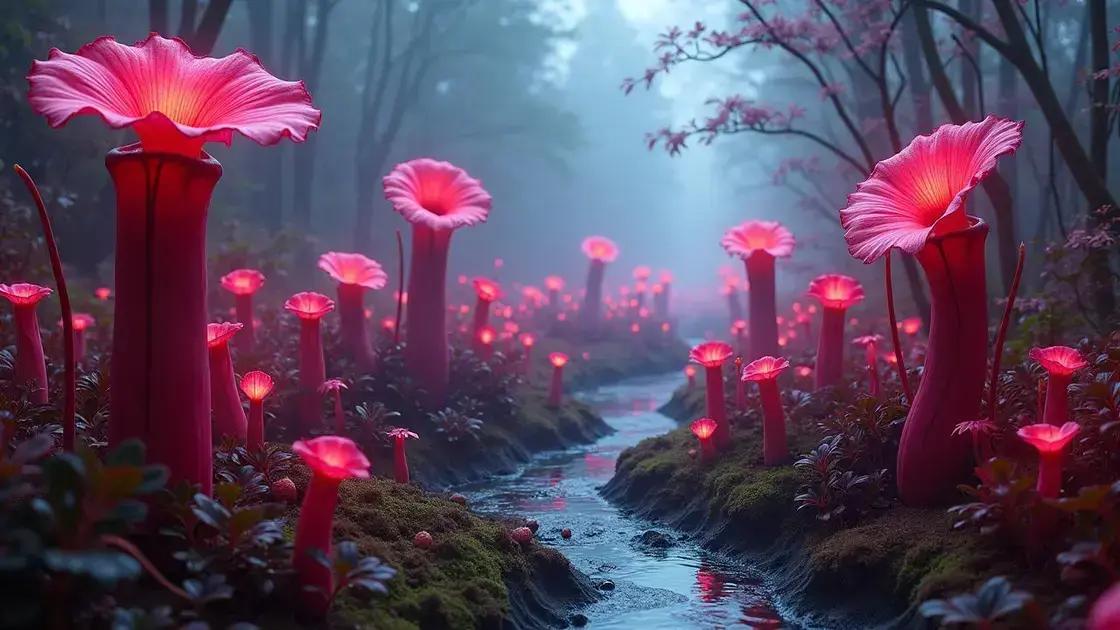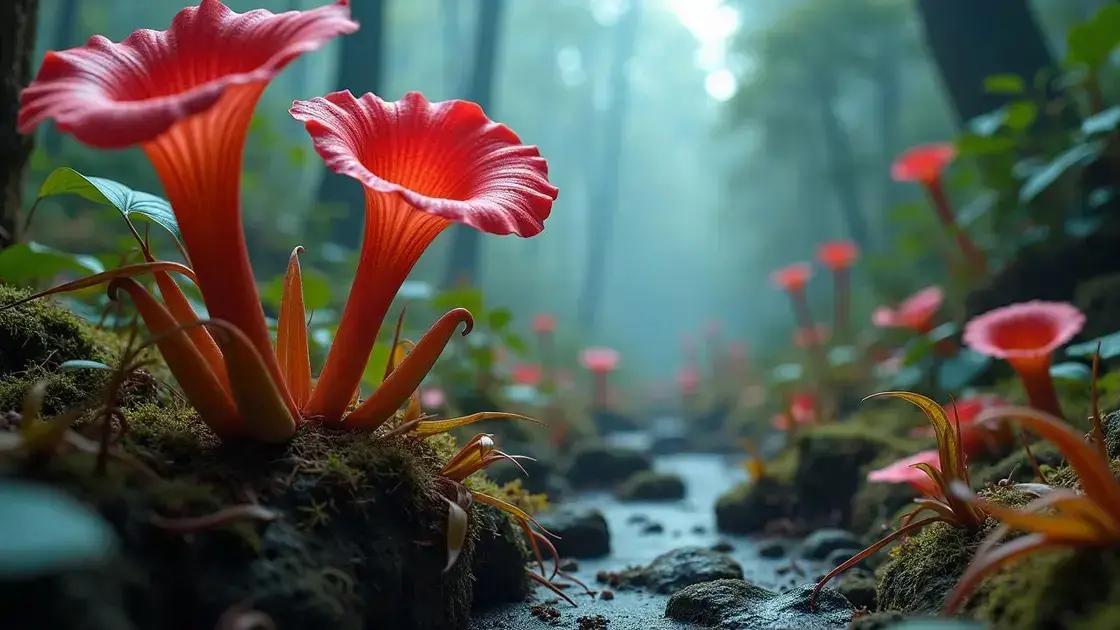How to Take Care of Pitcher Plant: 5 Expert Tips for Success
How to take care of pitcher plant can transform your gardening experience. These fascinating plants are not just visually stunning but also offer unique challenges. Understanding their needs can lead to a thriving and vibrant display in your home. Discover key insights below that will enhance your cultivation journey.
Table of Contents
ToggleEssential light requirements for pitcher plants
Essential light requirements for pitcher plants are crucial for their health and growth. These fascinating plants thrive best under specific light conditions that mimic their natural habitat. Proper light ensures that your pitcher plants can produce energy through photosynthesis and develop their unique pitcher structures.
Understanding light needs
Pitcher plants typically require bright, indirect sunlight. Too much direct sunlight can lead to scorched leaves, while too little can hinder their growth. Here’s how to provide the right light conditions:
- Place in a bright window where they receive indirect light for at least 6 hours.
- Use sheer curtains if sunlight is too harsh.
- Avoid placing them in dark corners of your home.
Types of light sources
When considering light sources for your pitcher plants, you can choose from natural or artificial sources. Here’s a comparison:
| Type of Light | Pros | Cons |
|---|---|---|
| Natural Sunlight | Free energy, supports natural growth. | Variable; can be too intense or insufficient. |
| Grow Lights | Consistent, controllable light conditions. | Requires electricity; additional cost. |
Tips for utilizing grow lights
If you choose to use grow lights for your pitcher plants, consider these tips:
- Select full-spectrum LED or fluorescent lights that simulate natural sunlight.
- Position the lights 12–24 inches above the plants.
- Run the lights for 12-16 hours daily, simulating a natural day/night cycle.
By effectively managing the light conditions for your pitcher plants, you’re ensuring their optimal growth and health. If you want to dive deeper into exploring indoor gardening techniques, you’ll find more insights to enhance your gardening efforts.
Common questions
- Can pitcher plants tolerate low light?
No, they thrive best with bright, indirect sunlight. - How often should I move my pitcher plant for light?
Move them as needed to ensure they receive sufficient light without exposure to direct sunlight.
Best soil and humidity for thriving pitcher plants

Best soil and humidity for thriving pitcher plants is vital to ensure their growth and development. Choosing the right substrate and keeping humidity levels optimal can lead to lush, healthy plants that flourish beautifully. Here’s how to create the perfect environment for pitcher plants.
Choosing the right soil
Pitcer plants thrive in nutrient-poor, acidic soil. Here are some ideal soil components you should consider:
- Sphagnum moss: Provides excellent aeration and moisture retention.
- Perlite: Enhances drainage and keeps the soil light.
- Orchid bark: Adds structure and improves air circulation.
- Peat moss: Offers acidity, though it should be used sparingly to prevent compaction.
A good mix might consist of:
- 50% sphagnum moss
- 30% perlite
- 20% orchid bark
Maintaining optimal humidity levels
Humidity is crucial for pitcher plant health. Ideally, these plants thrive in environments with humidity levels of 50-70%. Here are tips for maintaining these levels:
- Use a humidity tray: Fill a shallow dish with pebbles and water, placing the pot on the pebbles.
- Group plants together: Placing pitcher plants close can create a humid microclimate.
- Regular misting: Lightly mist the leaves during drier periods to boost moisture.
Importance of airflow
While humidity is essential, ensuring good airflow around your pitcher plants is equally important to prevent mold and root rot. Consider:
- Positioning plants in well-ventilated areas.
- Avoiding overcrowding to promote air circulation.
For those passionate about exploring indoor gardening techniques, getting the soil and humidity right can transform your pitcher plant care routine.
Common questions
- Can I use regular potting soil for pitcher plants?
No, regular potting soil is too rich and can harm them. - How can I increase humidity indoors?
Using a humidifier or placing water bowls near plants can help.
Feeding pitcher plants: Tips and common pests to watch for
Feeding pitcher plants is essential for their health and growth. These unique plants attract and digest insects to supplement their nutrient intake, but it’s important to ensure they receive balanced nutrition to thrive. Here’s how to effectively feed your pitcher plants while keeping an eye out for common pests.
Understanding feeding needs
Pitcer plants are carnivorous and have specific feeding requirements. They primarily consume insects, which provide them with water and nutrients. Here are some feeding tips:
- Feed pitcher plants with live insects, such as:
- Fruit flies
- Crickets
- Mealworms
- Place one or two insects per pitcher, but avoid overfeeding.
- If live insects are not available, you can use:
- Insect meal or powder mixed with water
- Diluted orchid fertilizer as a supplement.
Signs of healthy feeding
Monitor your pitcher plants for signs of proper feeding:
- Pitchers should maintain their vibrant color.
- Insects should be broken down inside the pitcher after feeding.
- New growth can indicate a healthy feeding regime.
Common pests to watch for
Even when feeding, pitcher plants can attract pests. Being vigilant about these common issues can help maintain plant health:
- Aphids: Tiny sap-sucking pests that can weaken the plant.
- Mealybugs: Cotton-like pests that can infect pitchers and roots.
- Spider mites: Micro mites that create webbing and can cause leaf damage.
To manage pests, consider:
- Regularly inspecting your plants for signs of infestation.
- Washing your plants with a gentle stream of water to remove pests.
- Applying insecticidal soap for severe infestations.
For those interested in exploring indoor gardening techniques, keeping your pitcher plants well-fed and pest-free will ensure they thrive.
Common questions
- How often should I feed my pitcher plants?
Feed them every 2-4 weeks, depending on their growth and size. - What happens if I don’t feed them?
They may become weak and lose their ability to grow and produce new pitchers.
In conclusion
Taking care of pitcher plants is a rewarding experience that combines knowledge of their unique needs with practical skills. By providing the right light, soil, and humidity, as well as ensuring proper feeding and pest management, you can create a thriving environment for these fascinating plants. Remember to regularly monitor your pitcher plants for health and signs of pests to ensure ongoing vitality. For more comprehensive tips on enhancing your indoor garden, check out these tips on enhancing your indoor garden.

